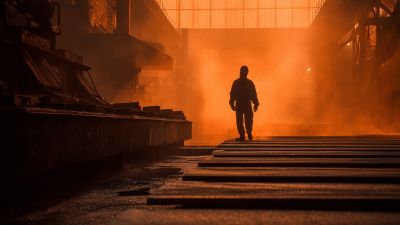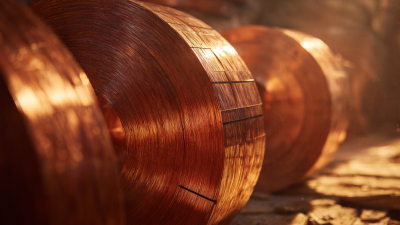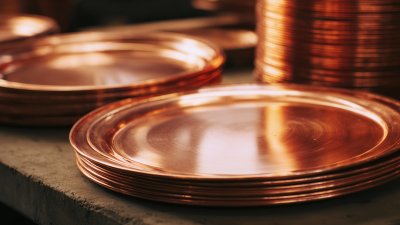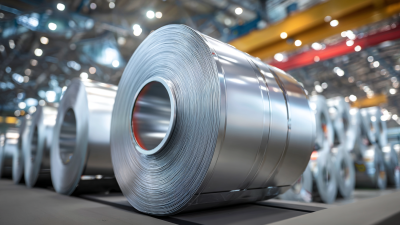In recent years, the architectural and design industries have increasingly turned their attention towards sustainable materials that not only enhance aesthetic appeal but also promote environmental responsibility. One such material is Copper Plate, which boasts a myriad of benefits that align with sustainable design principles. According to a report by the Sustainable Building Council, the global demand for eco-friendly materials is projected to grow by 20% annually, largely driven by the need for energy-efficient solutions.

Copper Plate, known for its durability and recyclability, stands out as an ideal choice; it can effectively reduce the carbon footprint of buildings and has a lifespan exceeding 100 years, significantly lowering life-cycle costs. Furthermore, research from the Journal of Green Building indicates that integrating Copper Plate into design can improve energy efficiency by up to 30%, making it not only a formidable ally in sustainability efforts but also a smart investment for modern architects and designers.
The use of copper plates in sustainable design has become increasingly prominent due to their numerous environmental benefits. Copper is a highly recyclable material, with approximately 80% of the copper ever mined still in use today, according to the International Copper Association. This long lifespan contributes significantly to reducing the need for new raw materials, which in turn lowers mining activities that are detrimental to the environment.
Furthermore, copper's inherent properties aid in lowering energy consumption. For example, data from the U.S. Department of Energy indicates that buildings using copper components can lead to a decrease in energy loss due to its excellent thermal and electrical conductivity. This can result in a reduction of greenhouse gas emissions, as more efficient building systems often translate to lower energy demands. By integrating copper plates into design, architects and builders can not only enhance aesthetic appeal but also contribute to a marked decrease in the overall environmental footprint of construction projects.
Copper plates play a significant role in enhancing building energy efficiency, particularly in sustainable design. Their excellent thermal conductivity allows for effective temperature regulation within structures, reducing the need for artificial heating and cooling systems. This natural ability not only contributes to comfort but also minimizes energy consumption, making buildings more environmentally friendly. By integrating copper plates into walls and roofs, architects can create passive solar heating solutions that harness sunlight, further optimizing energy use.
In addition to thermal management, copper's durability and low maintenance requirements enhance the overall sustainability of buildings. Unlike other materials that may require frequent replacement or extensive repairs, copper can last for decades with minimal degradation. This longevity means that buildings designed with copper plates can offset the environmental impact associated with frequent renovations and materials disposal. Furthermore, copper's ability to reflect solar radiation reduces the heat absorbed by a building, contributing to lower energy costs and supporting a more sustainable approach to architecture.
Copper plate is increasingly recognized for its significant role in sustainable architecture, particularly due to its durability and longevity. This metal can withstand the ravages of time and environmental stressors far better than many traditional materials. With a natural resistance to corrosion, copper maintains its integrity even in harsh climates, making it an ideal choice for both roofing and façade applications. This resilience not only prolongs the life of buildings but also reduces the need for frequent replacements, which can lead to substantial material and energy savings over time.
Tips for Incorporating Copper Plate in Design:
Consider the life cycle of your materials when planning a sustainable project. Selecting copper plate can contribute to reducing waste in the long term. Additionally, think about the aesthetic quality of copper; it develops a beautiful patina over time that enhances the character of buildings while providing functional benefits. Designers should also ensure proper installation techniques are employed to maximize the copper's lifespan and performance, reducing the need for future repairs.
By emphasizing quality and longevity in design choices, architects can leverage the unique properties of copper plate to create structures that not only meet contemporary aesthetic demands but also contribute positively to the environment.
Copper plate is increasingly recognized for its role in sustainable design, particularly in the context of LEED certification. As a natural material with a low environmental impact, copper can be sourced responsibly and recycled indefinitely without losing its quality. This characteristic not only minimizes waste but also reduces the need for virgin materials in construction, aligning perfectly with the goals of sustainable practices.
In addition to its recyclability, copper plate contributes to energy efficiency in buildings. Its excellent thermal conductivity allows for better temperature regulation, reducing energy consumption for heating and cooling. This factor can significantly enhance a building’s performance, earning valuable LEED points for energy innovation. Moreover, copper's durability and resistance to corrosion extend the lifespan of products, further supporting sustainable efforts by decreasing the frequency of replacements and repairs. Integrating copper plate into design not only adheres to eco-friendly standards but also meets the rigorous requirements set forth by LEED, making it a smart choice for architects and builders aiming for sustainability.
Copper plates are emerging as a cost-effective solution in long-term sustainable design strategies, particularly due to their inherent properties and versatility. Recent industry studies indicate a notable decrease in the operational costs associated with facilities utilizing copper in their infrastructure, primarily attributable to its durability and recyclability. For instance, the use of innovative copper recovery processes, such as cementation in stirred reactors, enhances the sustainability of copper use by reducing waste and facilitating the reuse of this critical material. This not only lowers material costs but also aligns with a circular economy, as recycled copper retains the high quality of its original form.
Furthermore, the incorporation of copper into manufacturing processes, such as Stack Forging, illustrates its value in creating advanced materials without compromising eco-friendliness. With the global push towards sustainable practices, the introduction of copper as a key component in various sectors is both an economic and environmental boon. As businesses strive to achieve net-zero targets, the cost-effectiveness of utilizing copper will likely continue to play a significant role in attractive sustainable design strategies, while simultaneously addressing critical mineral supply challenges that pose risks to the industry.









